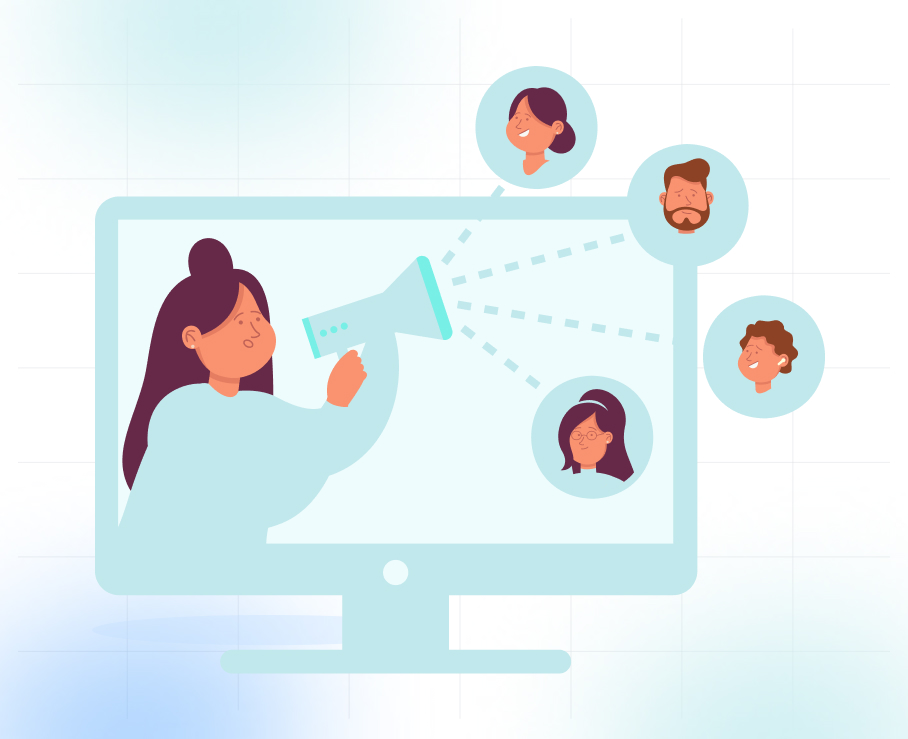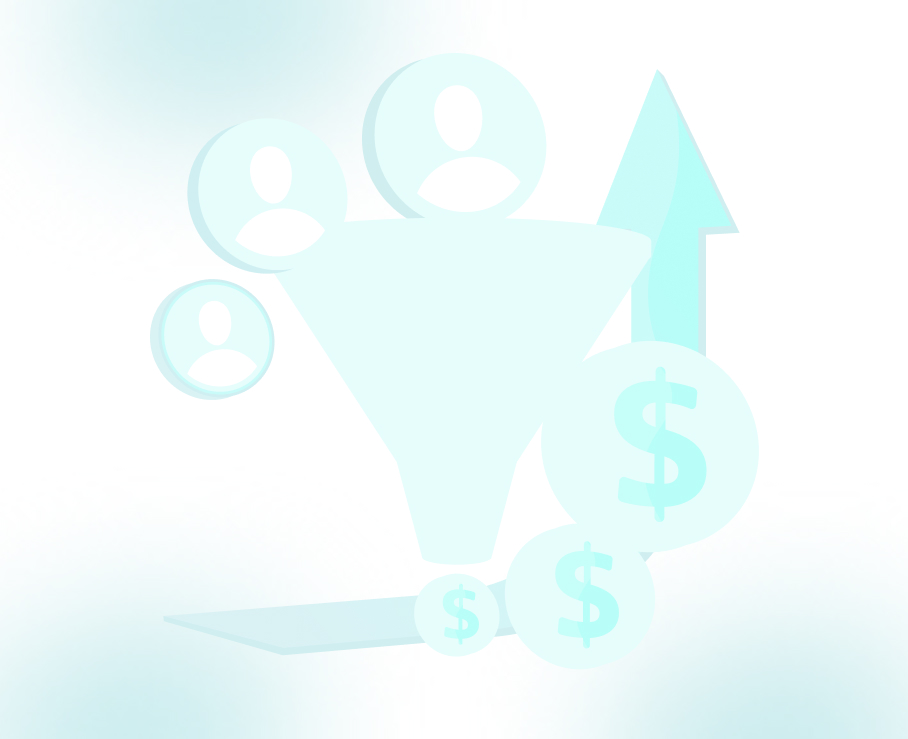
Understanding B2B Sales: Definitions, Examples, and Proven Strategies for Revenue Growth

Despite investments in CRMs, outreach tools, and detailed Ideal Customer Profiles (ICPs), many B2B sales teams still struggle to drive consistent results. Gartner reports that 77% of B2B buyers found their last purchase process to be difficult, resulting in longer deal cycles, increased involvement of stakeholders, and fewer sales-qualified leads (SQLs). For Sales Managers, CSOs, and Founders, this results in stalled pipelines, unpredictable forecasts, and missed revenue goals.
The real issue? Tools and tactics alone aren't enough. To succeed in 2025, sales teams need a scalable, insight-driven engine—one that aligns messaging, processes, and buyer intent from the first touch to the closed deal.
In this blog, we break down what B2B sales really look like today. You’ll get real-world examples, an overview of the sales process, and proven strategies to improve SQL conversions, speed up cycles, and grow recurring revenue. Plus, we’ll cover common challenges and what future-ready sales leaders are doing differently.
What Is B2B Sales?
B2B (business-to-business) sales is the process where one company sells products or services directly to another company. Unlike B2C, these sales involve organisations purchasing to support operations, meet strategic goals, or resell. While the ultimate objective remains revenue growth, the complexity, stakeholders, and scale differ significantly.
At its core, B2B sales is about solving problems for businesses. This requires consultative selling, value articulation, and ROI-driven decision-making. Sales teams must understand the client’s goals, align their offerings with those objectives, and tailor their communication to decision-makers.
Here are the most defining characteristics of B2B sales:

- Multi-Stakeholder Decision Making: Purchasing decisions often require alignment between C-suite executives, department heads, procurement, and finance.
- Extended Sales Cycles: B2B deals often span weeks or months, depending on deal size, complexity, and approval chains.
- Value-Focused Buying: Buyers prioritise solutions that improve efficiency, reduce costs, or unlock long-term business value.
- Data-Driven Sales Motions: Sales reps must support claims with business cases, case studies, metrics, and competitor benchmarks.
- Larger Contract Values: B2B transactions often involve bulk purchases, subscriptions, or long-term service contracts, resulting in significantly higher deal values compared to B2C transactions.
TLM is built for this environment. With deep expertise in B2B sales, we specialize in generating high-quality, ICP-matched Sales Qualified Leads (SQLs) through targeted strategies, especially via email marketing. Our tailored approach helps businesses in manufacturing, IT, staffing, and managed services accelerate sales cycles, secure more qualified meetings, and ultimately close more deals.
Common Types and Real-World Examples of B2B Sales

B2B sales can take many forms, depending on the nature of the product, the complexity of the sales cycle, and the target market. Here are the most relevant types of B2B sales models, along with real-world examples to contextualise each one:
1. Inside Sales
Sales representatives engage with prospects remotely through email, phone, or video calls. This model is best suited for transactional sales with shorter sales cycles.
Example: A Michigan-based staffing agency was struggling to place a bench of experienced IT professionals after losing a major client. By targeting IT and data managers through personalised email outreach, they secured steady conversations and averaged three qualified leads per month, all without face-to-face meetings.
2. Field Sales
This model involves in-person interactions and on-site meetings. It’s suited for high-value transactions where multiple stakeholders are involved. Field sales often rely on strong relationships, especially in industries like manufacturing, heavy equipment, or construction, where buyers need to see the product, facility, or team firsthand before making a decision.
3. Enterprise Sales
Enterprise sales involve lengthy cycles, substantial contract values, and numerous touchpoints. These are typically complex and tailored solutions sold to large organisations, often requiring buy-in from multiple departments. Success here hinges on strategic account management, custom proposals, and long-term relationship-building.
4. Ecommerce-Driven B2B Sales
B2B ecommerce platforms allow businesses to browse products, compare pricing, and place orders online. This works well for repeatable, low-touch purchases.
Example: A Dallas-based office furniture manufacturer wanted to expand its presence beyond local referrals and costly ad campaigns. Inventory was piling up faster than orders, and traditional marketing efforts were slow to scale.
By launching a targeted email campaign focused on showcasing its furniture catalog to businesses across Texas, the company saw a surge in website visits and qualified inquiries.
Within three months, they booked multiple on-site meetings and secured new customers, eventually expanding their reach to other states through referrals.
5. Wholesale and Distribution Sales
In this model, wholesalers sell goods in bulk to retailers or other businesses for resale or further processing.
Example: A family-owned warehousing and fulfillment company on the East Coast faced difficulty converting leads into long-term distribution clients, often losing deals to competitors with smaller facilities.
By realigning their outreach strategy to highlight better bulk services like kitting, assembly, and subscription box fulfillment, they were able to target businesses in need of recurring logistics support. This led to a consistent stream of appointments with qualified prospects and helped open up new distribution relationships with high-volume potential.
6. Supply and Consumable Sales
This type focuses on selling everyday consumables used in business operations. These products, such as cleaning supplies, industrial parts, or office materials, tend to be replenished regularly and purchased in large quantities. While typically lower in ticket size, the recurring nature of these sales makes them a valuable and stable revenue stream.
7. Service-Based Sales
These involve the sale of consulting, marketing, accounting, or HR services tailored to business needs.
Example: A New York-based managed IT services provider, with operations across several U.S. regions, had previously spent over $500,000 on traditional outreach methods like cold calls and direct mail. Despite the investment, results were underwhelming. To reboot their sales pipeline, they ran two focused email campaigns — one centred on managed IT and the other on digital transformation services, such as ServiceNow, targeting businesses with $15M–$100M in annual revenue.
Within the first month, the company generated two high-quality leads, closing one quickly. Over the next few months, the campaigns brought in a steady average of two leads per month per campaign. While the top MRR deal closed was $1,080, the bigger win was predictable traction in a competitive market.
8. Government and Nonprofit Sales (B2G)
B2G sales involve selling products or services to government agencies or nonprofit organisations. These deals typically follow formal procurement processes, including tenders or RFPs (requests for proposal), and often require compliance with specific regulations. The cycle may be slower, but deals tend to be high value and long term, offering stability and reputational advantages for vendors who win them.
Each model reflects how businesses interact based on their operational needs, deal size, and decision-making structure. Understanding these types helps sales teams customise their outreach and improve conversion outcomes.
Key Differences Between B2B and B2C Sales

While B2B refers to businesses selling to other businesses, B2C (business-to-consumer) involves selling directly to individual consumers. This would include e-commerce sites, clothing brands, or supermarkets. Understanding the differences between B2B and B2C sales is crucial if you're planning to enhance lead conversion and establish realistic revenue targets.
Here’s how these two sales approaches contrast:
1. Purchase Motivation and Buyer Behaviour
Business goals drive B2B buyers, as well as long-term return on investment (ROI) and operational efficiency. They often research multiple vendors, compare features in-depth, and require proof of value before making decisions. B2C buyers, in contrast, are more likely to make impulse purchases based on emotion, brand perception, or convenience.
2. Sales Cycle and Touchpoints
B2B sales cycles are longer and more complex. They often include product demos, technical evaluations, internal approvals, and multiple meetings. A single deal can take several weeks to several months to close. B2C sales, however, usually involve fewer steps and conclude within minutes or days.
3. Decision-Making Dynamics
B2B deals typically involve multiple stakeholders, procurement leads, department heads, finance, and even legal teams. It takes consensus to move forward. B2C decisions, however, usually rest with one or two individuals and are made relatively quickly.
This complexity in B2B sales means identifying sales-qualified leads (SQLs) is essential. Not every inquiry is ready for a conversation. Proper lead qualification, often through email engagement, responses, or behavioral triggers, helps sales teams prioritize the right prospects.
4. Deal Value and Contractual Elements
B2B transactions are high-value, often recurring, and include detailed contracts, pricing negotiations, and service-level agreements. B2C sales are typically lower in value and more transactional, characterised by standard terms and minimal paperwork.
Appointment setting becomes key in B2B here, especially when the stakes are higher and multiple conversations are needed. Booking the right meetings with decision-makers is often the tipping point between interest and a signed deal.
5. Sales Strategy and Communication Style
B2B sales require a consultative approach, personalised outreach, customised solutions, and long-term relationship building. B2C sales focus more on branding, emotional appeal, and urgency through pricing or promotions.
6. Marketing and Outreach Channels
B2B sales rely on targeted email campaigns, in-depth content, and direct engagement with decision-makers. B2C sales lean on high-traffic channels like social media, influencer partnerships, and wide-scale advertising.
Grasping these distinctions enables your sales team to create more relevant messaging, accurately qualify leads, and design workflows that align with the buyer's journey.
Also Read: Scalable B2B Appointment Setting: Strategies and Guides
The B2B Sales Process Explained

B2B sales are rarely linear. They involve multiple decision-makers, longer deal cycles, and high-value transactions. To consistently close high-quality deals, your sales team must navigate each stage with precision and expertise.
Here’s a breakdown of the key stages in a high-performing B2B sales process:
1. Lead Generation
Lead generation is the entry point of your pipeline. It’s where you attract potential buyers that fit your Ideal Customer Profile (ICP). At this stage, quality matters more than quantity.
Common B2B lead generation tactics include:
- Email outreach: Personalised cold emails that address pain points. The average open rate for B2B email campaigns is 22.86%, with a 3.71% click-through rate.
- Inbound marketing: SEO-driven blogs, lead magnets, and case studies that attract interest organically.
- Event networking: Trade shows and virtual events that connect you with active buyers.
- Intent data tools: Platforms that track buyer intent based on online behaviour.
TLM supports this stage by identifying and engaging decision-makers through compliant, data-driven email outreach. With a sharp focus on B2B campaigns, advanced targeting, and conversion-led strategy. TLM helps you run targeted email marketing campaigns that don’t just land in inboxes, they start conversations, generate leads, and drive real business results.
Read: 6 Reasons Why Outsourcing Your Email Marketing Can Boost Your Business
2. Lead Qualification
Not every lead is worth pursuing. Qualification ensures your team focuses on prospects with the highest probability of closing.
Use frameworks like BANT (Budget, Authority, Need, Timing) or CHAMP (Challenges, Authority, Money, Prioritisation) to evaluate:
- Is there a real need for your solution?
- Do they have the budget and authority to purchase?
- Is the timing right for implementation?
At TLM, we help clients score and segment leads so your sales team doesn’t waste time on unqualified prospects.
Read: Top 8 Strategies for Successful Targeted Lead Generation
3. Discovery and Needs Analysis
This stage uncovers the “why” behind the buyer’s interest. It's where your team digs into the prospect’s operational challenges and business goals.
Key actions here include:
- Running discovery calls to explore pain points.
- Mapping stakeholder priorities.
- Documenting existing workflows and inefficiencies.
The insights gathered enable your team to personalise pitches, demos, and email follow-ups. Our inside sales team ensures you never enter a call without context.
Whether you're aiming to fill your pipeline with high-intent leads or build long-term relationships through strategic outreach, TLM is equipped to support your goals. From personalised email campaigns to appointment setting backed by real-time insights, we bring a proven, performance-driven approach to B2B lead generation.
With deep expertise across industries and complete transparency in execution, we don’t just deliver leads, we help you build momentum. Partner with TLM and experience what focused, reliable, and revenue-aligned lead generation truly looks like.
4. Proposal and Presentation
Once the problem is clearly defined, it’s time to position your solution.
Use a structured proposal to showcase:
- How does your product or service address specific business challenges?
- Expected ROI and time-to-value.
- Implementation roadmap and support scope.
For SaaS or complex solutions, product demos should reflect the prospect’s use case. Avoid feature-dumping; lead with business outcomes.
5. Objection Handling
Objections are signs of interest, not rejection. Prospects raise concerns when they are evaluating you seriously.
Typical objections include:
- “It’s too expensive” – Counter with ROI data or industry benchmarks.
- “Now’s not the right time” – Ask about upcoming initiatives and tie your offer to future plans.
- “We’re using a competitor” – Highlight differentiators, support, and results.
Equip your team with battle cards, objection-handling scripts, and success stories. We help you craft email sequences that proactively address these concerns.
6. Negotiation and Contracting
When the proposal meets expectations, it’s time to finalise pricing, deliverables, and legal terms.
Key tips to navigate this phase:
- Maintain flexibility without eroding value.
- Bring in procurement, finance, or legal teams early.
- Use digital contracting tools to reduce delays.
A smooth negotiation phase depends on early stakeholder alignment and clear communication. Streamlining this step helps avoid delays and builds mutual trust.
7. Closing
Closing requires alignment across multiple stakeholders.
To ensure a smooth sign-off:
- Recap value delivered in earlier conversations.
- Clarify next steps, payment terms, and onboarding timelines to ensure a smooth process.
- Confirm commitment from all key decision-makers.
This stage is less about persuasion and more about confirming shared expectations. You must nurture prospects until the final handshake with high-conversion follow-up cadences.
Post-Sale Support and Account Expansion
Closing a deal is just the beginning of a long-term partnership.
Focus on:
- Onboarding: Ensure a frictionless start for the client.
- Regular check-ins: Monitor usage, satisfaction, and results to ensure optimal performance.
- Upsell opportunities: Introduce additional services tailored to new challenges or areas of growth.
Effective post-sale support relies on seamless handoffs and informed follow-ups, ensuring that account growth aligns with the client’s evolving needs.
How a SaaS Client Scaled with TLM
For instance, a Canada-based SaaS company approached TLM with a limited sales budget and the need to break into the lender market. The TLM team worked hands-on from day one, starting with contact discovery, defining the right titles to target, and sharing sample data presentations for alignment.
Once the campaign went live, appointments started coming in within the first month. Over four months, we delivered 15–20 qualified leads. But it didn’t stop there. The client continued working with us, requesting additional research and prospecting lists for their newsletter and further outreach efforts.
This kind of engagement demonstrates how TLM operates in real-time—sharing updates, refining targeting based on early traction, and staying proactive in identifying new opportunities, all while maintaining open communication with the client’s team.
Mastering each stage of the B2B sales process helps you build stronger relationships and close deals more efficiently. A clear, structured approach ensures you focus your efforts where they matter most.
Challenges in B2B Sales
B2B sales present a unique set of challenges that require a strategic approach, consistency, and the right tools to overcome. Below are the most common obstacles and their effective solutions:
1. Long Sales Cycles
The challenge: B2B deals often take months to close. Extended timelines can delay revenue, strain your team’s bandwidth, and complicate pipeline forecasting.
Why it matters: Multiple stakeholders, complex needs, and thorough due diligence slow down decision-making. Sales teams risk losing momentum or disengaging prospects during these lengthy cycles.
How to overcome it: Break the sales cycle into measurable stages with clear milestones. Use CRM systems to track engagement and automate follow-ups. Maintain regular contact to nurture trust and keep the deal moving.
2. Accessing Decision-Makers
The challenge: Reaching the right stakeholders is difficult due to gatekeepers, unclear organisational charts, and hierarchical structures.
Why it matters: You risk pitching to someone without buying authority, wasting time and resources without meaningful progress.
How to overcome it: Use a multithreaded approach: reach out via email and referrals. Build rapport with gatekeepers. Use case studies or mutual connections to earn trust and facilitate warm introductions.
3. Complex Decision-Making Process
The challenge: B2B purchases often involve multiple stakeholders from various departments with diverse priorities and concerns.
Why it matters: Sales messaging must align with technical, financial, and strategic goals across the organisation. A misstep with one stakeholder can stall the entire deal.
How to overcome it: Map out the buyer committee and personalise outreach for each stakeholder. Tailor proposals to address specific concerns. Share relevant content that supports their evaluation journey, such as ROI calculators or comparison guides.
4. Intense Market Competition
The challenge: Many vendors offer similar solutions, making it difficult to differentiate solely on the basis of features or pricing.
Why it matters: Prospects often compare multiple options side-by-side. If you don’t demonstrate unique value, you risk becoming a commodity.
How to overcome it: Position your offering around differentiated value, be it customer support, integration capabilities, or scalability. Focus on business outcomes instead of features. Highlight proof points through testimonials and case studies.
5. Lead Qualification Issues
The challenge: Unqualified leads slow down the pipeline and waste valuable selling time.
Why it matters: Sales teams spend hours on prospects who lack the budget, authority, or intent to buy, reducing overall productivity.
How to overcome it: Align with marketing on lead scoring criteria. Define what a high-quality lead looks like and tailor outreach accordingly. The tighter your targeting, the more likely leads are to convert and move swiftly through the funnel. At TLM, lead qualification starts with targeted marketing. We segment by industry, title, and service type, ensuring every campaign targets the right audience from the start.
6. Technology and Data Integration
The challenge: While sales and automation tools are essential, integrating them into daily operations is often a struggle.
Why it matters: Poor adoption leads to data silos, missed opportunities, and inconsistent processes across the team.
How to overcome it: Provide hands-on training and onboarding for new tools. Regularly audit tech usage and data hygiene. Choose platforms that integrate seamlessly with your existing stack and adapt to your workflows.
B2B sales are complex but not insurmountable. With the right systems, cross-functional alignment, and a buyer-centric mindset, sales teams can navigate these challenges and build a high-performing pipeline.
Also Read: How to Build Effective B2B Email Lists
Effective B2B Sales Strategies for 2025

In 2025, successful B2B sales strategies will need to reflect this shift in buyer expectations. Generic outreach and one-size-fits-all messaging no longer drive results. Sales teams must prioritise precision, alignment, and value at every stage of the buyer journey.
Here are key strategies modern B2B teams must adopt to convert high-value prospects into long-term customers consistently:
1. Account-Based Sales (ABS)
Account-Based Targeting flips the traditional lead funnel, starting with your dream accounts and crafting campaigns just for them. ABM (Account-Based Marketing) is all about quality over quantity: fewer leads, but with a higher chance of conversion. When done right, it shortens deal cycles and builds stronger, more relevant customer relationships.
At TLM, we approach ABM with precision, segmenting by industry, title, and service type to build campaigns that speak directly to decision-makers. Our goal? Fewer dead-end conversations, more meaningful meetings.
2. Content Marketing and Social Selling
Buyers complete 57% of their decision-making before speaking to a salesperson. Providing them with relevant, value-driven content is critical. Publish thought leadership, case studies, and industry-specific guides to build credibility.
Pair this with social selling to engage prospects early and establish relationships before competitors enter the conversation.
3. Value-Based Selling
Modern buyers demand more than feature lists. They want to see clear business outcomes. Your pitch must focus on how your solution improves revenue, reduces cost, or mitigates risk. Use ROI calculators, customer success stories, or industry benchmarks to support your claims.
4. Intent Data and Buyer Signals
Using real-time buying signals allows reps to prioritise outreach to leads already in the consideration phase. Tools that track website visits, content engagement, or competitor comparisons help identify who’s ready to talk.
This approach increases efficiency and shortens the sales cycle.
5. Automated Yet Personalised Email Sequences
Sales automation tools enable outreach at scale, but the key is maintaining a human touch in communication. Segment lists based on intent, job role, or engagement level. Use dynamic fields to personalise subject lines and body content while maintaining a conversational tone. Follow-up timing should be optimised based on buyer behaviour.
6. Sales and Marketing Alignment
A consistent brand voice and coordinated handoffs between sales and marketing ensure smooth prospect experiences. Joint planning around campaign themes, lead scoring models, and funnel metrics leads to higher-quality SQLs and improved conversion rates.
7. Continuous Data-Driven Improvement
Track OKRs across every sales initiative. Use CRM and campaign data to spot patterns, refine targeting, and identify drop-off points in the pipeline. Regular reviews and competitor benchmarking ensure your team adapts quickly to shifts in buyer preferences or market dynamics.
Sales success in 2025 depends on aligning strategy with buyer expectations, using data to personalise outreach, and creating value before asking for a sale. When these elements come together, businesses not only boost conversions but also build lasting relationships that drive recurring revenue.
Also Read: The Art of Selecting a B2B Lead Generation Vendor: Quality Over Quantity
Achieve Better B2B Sales Outcomes Using TLM’s Data-Driven Services
Improving B2B sales performance requires more than tracking generic KPIs. At TLM, we focus on pipeline metrics that actually move the needle for MSPs, tech firms, and staffing companies.
Here’s how our B2B appointment setting and lead generation services help streamline your pipeline and improve MRR:
- Sales Qualified Lead Accuracy: We filter out low-intent prospects, delivering only high-quality SQLs. This shortens your sales cycle and boosts deal closure rates.
- Improved Appointment-to-Close Ratio: Through precise targeting and qualification, TLM ensures your sales team spends time only on meetings that are likely to convert.
- Consistent Monthly Recurring Revenue (MRR) Growth: By generating a steady flow of qualified leads and booked meetings, we help businesses build a predictable revenue engine.
- Shorter Sales Cycle Duration: Our personalised outreach and email marketing tactics accelerate decision-making, resulting in quicker deal closures.
- Email Engagement Insights: With real-time dashboards and optimised scripts, you can track replies and fine-tune your campaigns for better results.
These outcomes are not hypothetical. With a 88% retention rate and clients across the USA, Canada, and Australia, TLM’s data-backed methods are proven to deliver.
At TLM, we specialise in helping MSPs, staffing firms, tech companies, and manufacturers generate qualified leads and close deals faster.
Ready to boost your B2B sales engine and grow your revenue? Schedule a Meeting with TLM’s sales experts and start building your predictable pipeline today.
FAQs
1. What is B2B sales, and how is it different from B2C?
B2B sales involve transactions between businesses, focusing on logic and ROI, longer sales cycles, and multiple decision-makers, unlike B2C sales, which target individual consumers.
2. How long is a typical B2B sales cycle?
It varies but often spans several months due to complex decision-making and contract negotiations.
3. What are the most effective B2B sales channels?
Email outreach, targeted content marketing, social selling, and appointment setting are key channels for effective marketing.
4. How can MSPs or tech companies generate more SQLs?
Focusing on ICP-specific messaging, intent data, personalised outreach, and aligning marketing and sales efforts improves SQL generation.
5. Why do B2B companies need appointment-setting services?
Appointment setting helps qualify leads and secure meetings with key decision-makers, accelerating the sales process.






